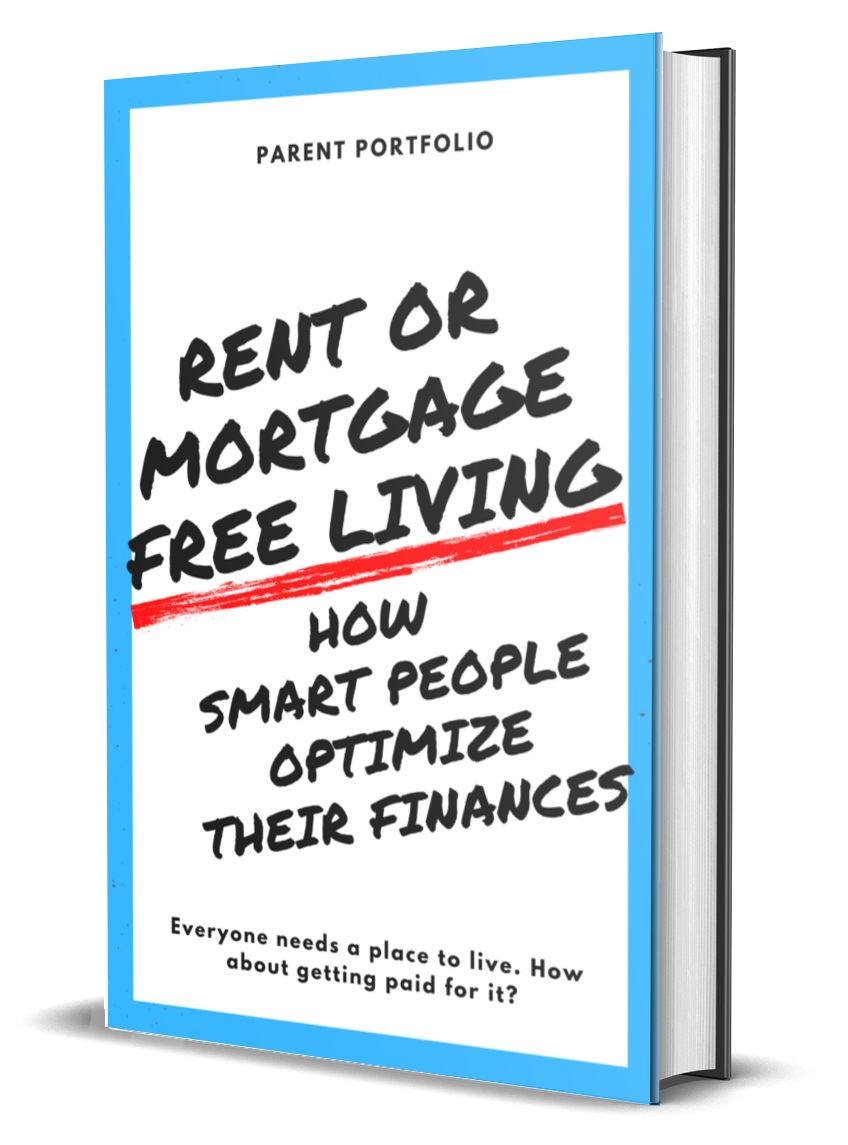1031 Exchange Rules: How To Save On Taxes

One of the secrets of the wealthy is avoiding paying taxes. The wealthy put their money in qualifying tax shelters or utilize tax deductions to prevent the government from touching their money. A 1031 exchange is one of the tax codes savvy real estate investors take advantage of to avoid paying capital gains tax and upgrade their portfolio.
What is a 1031 Exchange?
A 1031 exchange, also called like-kind exchange, refers to the Internal Revenue Service tax code Section 1031. This internal revenue code allows anyone to defer capital gains taxes on the sale of their property. The only requirement is that a person must buy “like-kind” property of equal or greater value with the sale’s profits.
A mouthful? That was a short version of the actual IRS code. But, I’ll break it down further with all the rules associated with a 1031 exchange.
In real estate, this tax code allows investors to temporarily avoid paying taxes with the sale of an investment property. The investor can then use the capital gains taxes to purchase one or more investment properties. The purchase price of the replacement property must be at least the sale price of the original investment property.
This process usually costs about $600.
Just remember that the 1031 exchange defer capital gains taxes and not remove it. The government expects that your assets will grow and expect a bigger tax bill!
1031 Exchange Example
Jonah owns a rental property he bought for $100,000. The property is aging and getting costly to maintain. Furthermore, the location of his investment has attracted unfavorable tenants.
Fortunately, his property has increased in value, and he can sell it for $200,000. If he decides to keep the money, the government will tax him on the capital gain.
Do I hear a “boo”?
Instead, Jonah uses a 1031 exchange and acquires an apartment complex for $500,000. The apartment complex is an upgrade for maintenance costs, and it’s in a location that can generate better cash flow.
In this example, Jonah won in three different ways:
- Avoids paying taxes on the sale of his rental property.
- Reduces maintenance expenses.
- Increases his cash flow.
What are the 1031 Exchange Rules?
Tax savings are incredible. It’s better to have more money in your pocket than Uncle Sam’s!
However, the 1031 Exchange Rules are stringent. Therefore, you must complete all of them if you want to reap the benefits.
“Like-Kind” Property
The 1031 exchange is not limited to real estate. Anyone can apply the tax code to any property, such as a painting. However, when exchanging one asset for another, they must be “like-kind.”
Therefore, a person cannot exchange a painting by Pablo Picasso for an apartment. It doesn’t matter if it’s a painting of a house too!
When it comes to real estate, an investor can exchange any kind of real estate investment for another real estate investment. For example, an investor can trade a rental property for a duplex. Or, an investor can exchange raw land for a small apartment building.
However, an investment property must be held onto by an investor for about 24 months before qualifying for a 1031 exchange. This timeframe is known as the qualifying use period. Therefore, house flippers will not avail of this tax code because they usually sell their properties for less than 12 months.
Replacement Value
The purchase price of the replacement real estate must be equal to or greater than the original asset’s sale.
For example, an investor that sells his investment property for $200,000 needs to purchase another investment property that is at least $200,000. The investor buys an apartment complex for $500,000, which satisfies the rule because it is greater than the original asset’s sale.
If the investor purchases a property less than the sale of the original asset, then he will get taxed on the difference between the sale price and purchase price.
For example, the same investor decided not to purchase an apartment. Instead, he buys a $150,000 rental property. The difference is $50,000, which will be taxed.
The nice thing about the 1031 exchange rules is that its requirements pertain to the replacement value and not the number of physical assets. Thus, an investor can purchase two or more properties to have the replacement value equal to or greater than the original sale.
Hence, in the earlier example, the investor can purchase two properties (one for $150,000 and another for $150,000) to fulfill the government’s requirement.
Timeline
The government has a strict rule regarding the window of time a replacement asset is found and acquired. These two windows are a 45-day identification period and a 180-day closing window.
According to the 1031 exchange rules, an investor must identify a replacement property they plan to purchase within 45 days of closing. In real estate investing, that is not a lot of time. I’ve spent months pursuing properties and didn’t win one.
Therefore, waiting to start looking for a replacement property after accepting a contract is not the optimal solution. Ideally, an investor has already found a deal, which initiates an investor to sell their property and perform a 1031 exchange.
Otherwise, a solution is for an investor to start looking for a replacement property once they list their property for sale. Or, the investor can negotiate a long escrow period to buy them more time.
However, not all sales go through on the purchase of a replacement property. So, the rule allows real estate investors to identify up to three properties for this reason.
Aside from the 45-days window, there is also a 180-days window! The tax code requires that the replacement property must close within 180 days of selling their property.
The essential thing to remember is to document everything between buyers and sellers.
Don’t rely on the word of a real estate agent or a tax accountant. Instead, make sure the seller of the replacement property has signed and dated documents as proof the investor made it within the timeline windows.
No Touching The Money
The buyer should never deposit the sale proceeds to any bank account owned or controlled by the investor.
Furthermore, this restriction also applies to associates within the investor’s circle:
- Spouse
- Family member
- A real estate agent or broker
- Business associates
- Accountant
- Attorney
- Or anyone who held those positions prior.
Therefore, hiring a qualified intermediary to hold the money is how an investor can comply with the 1031 exchange rules. This qualified intermediary is also known as an accommodator.
When it’s time to close on the replacement property, the intermediary can work with the title company to transfer the funds.
How To Do a 1031 Exchange
Below is the 1031 exchange process from listing your property to identifying a replacement property to closing on it.
Step 1: List your property for sale.
Inform your selling agent that you want to do a 1031 exchange.
This notification will let the agent know they need to include language in the listing to give the buyer’s a heads up.
Step 2: Look For Replacement Properties
One of the 1031 exchange rules is to identify a replacement property within 45-days of closing. You can get a head start by starting their search once their property is listed.
Step 3: Find Qualified Intermediary
Avoid anyone of your associates within your circle. Instead, request recommendations for a seasoned and well-trusted professional.
Step 4: Accept Off On Your House
Make sure that the purchase agreement includes that you are trying to perform a 1031 exchange. This inclusion makes sure you are protected and that the buyer is willing to work with you.
Negotiate to have a long escrow closing to buy you more time.
Step 5: Close On The Sale
The title company and the intermediary will perform most of this work. Verify on your end that the buyer successfully transferred the funds to the intermediary’s account.
Step 6: Identify Three Replacement Properties
You should have been looking for three potential replacement properties once you listed your property. Now it’s time to make it official.
Step 7: Sign a Contract On the Replacement Property
Sign a contract on your replacement property and inform the seller that you plan to do a 1031 exchange.
You can make offers on the other two replacement properties. However, you need to make sure you include a contingency clause that will allow you to back out.
Step 8: Intermediary Works with the Title Company
Coordinate with the intermediary to make sure all the paperwork is in order with the title company.
Step 9: Close On the replacement Property
The intermediary will transfer funds to the title company. The essential thing to remember is to close on the property within 180 days of closing.
What is a Reverse Exchange?
A reverse 1031 exchange is different from a standard 1031 exchange.
In a reverse exchange, an investor purchases a replacement property first before selling the original property. The investor has 180 days to close on the original property once the investor acquires the replacement property.
An Exchange Accommodation Titleholder will hold the title to the replacement property or the original property until a new buyer owns the original property.

Can You Do a 1031 Exchange On a Vacation Rental?
A homeowner cannot use a 1031 exchange on the capital gains on the sale of their primary residence.
The 1031 exchange only allows an exchange of an investment property to one or more investment property. These rules imply that the IRS does not recognize a homeowner’s primary residence as an investment.
However, an investor can use a 1031 exchange on a vacation rental. Therefore, a person can avoid capital gains tax on a second home as long as it qualifies as a vacation rental.
The IRS allows a 1031 exchange for a second home for the following requirements:
- An owner must rent the second home and rent it for at least 14 days.
- An owner can only use the second home for personal use for no more than 14 days or 10% of the number of days someone rented it for within the year.
For example, a second home gets rented out for 300 days (i.e., ten months). So far, the owner satisfies the requirement.
Furthermore, the standard rule is that an investor can only use the property for personal for no more than 14 days. However, since guests rented out the second home for 300 days, the owner can use it for personal use for no more than 30 days (300 days x 10%).
How To Avoid Paying Taxes With a 1031 Exchange?
When an investor is ready to cash out an investment property purchased with a 1031 exchange, the government will tax the capital gains of the sale.
But, the government will not just tax the capital gains of the sold property. They will tax ALL the properties that utilized the tax code.
However, an investor can AVOID paying taxes by passing down the real estate properties to their heir after they die. According to inheritance law, heirs will inherit the properties on a stepped-up basis. The stepped-up basis is the fair market value of the property when it’s inherited.
For example, an investor purchased a property for $200,000 using a 1031 exchange. After holding the property, the property is now worth $400,000. The government will tax the capital gains if an investor wants to cash out.
Ignoring closing costs and fees, the investor will pay capital gains tax against an amount of over $100,000 ($400,000 – $200,000+).
On the other hand, when a benefactor inherits a property, they will receive it on a stepped-up basis. In the case of the previous example, the stepped-up basis is $400,000.
Therefore, if the benefactor wants to sell the property, the capital gains are little or none ($400,000 – $400,000).
The benefactors will receive $400,000 (ignoring closing costs and fees) and avoid paying any capital gains taxes!
Conclusion
A 1031 exchange is one of the best tax savings strategies real estate investors use to upgrade their real estate portfolio. They can use the capital gains to scale their investment properties or purchase a property that generates more cash flow.
The government allows investors to defer paying capital gains tax. The government expects they will receive a bigger tax bill. However, investors can avoid paying taxes by transferring their assets to an heir.





